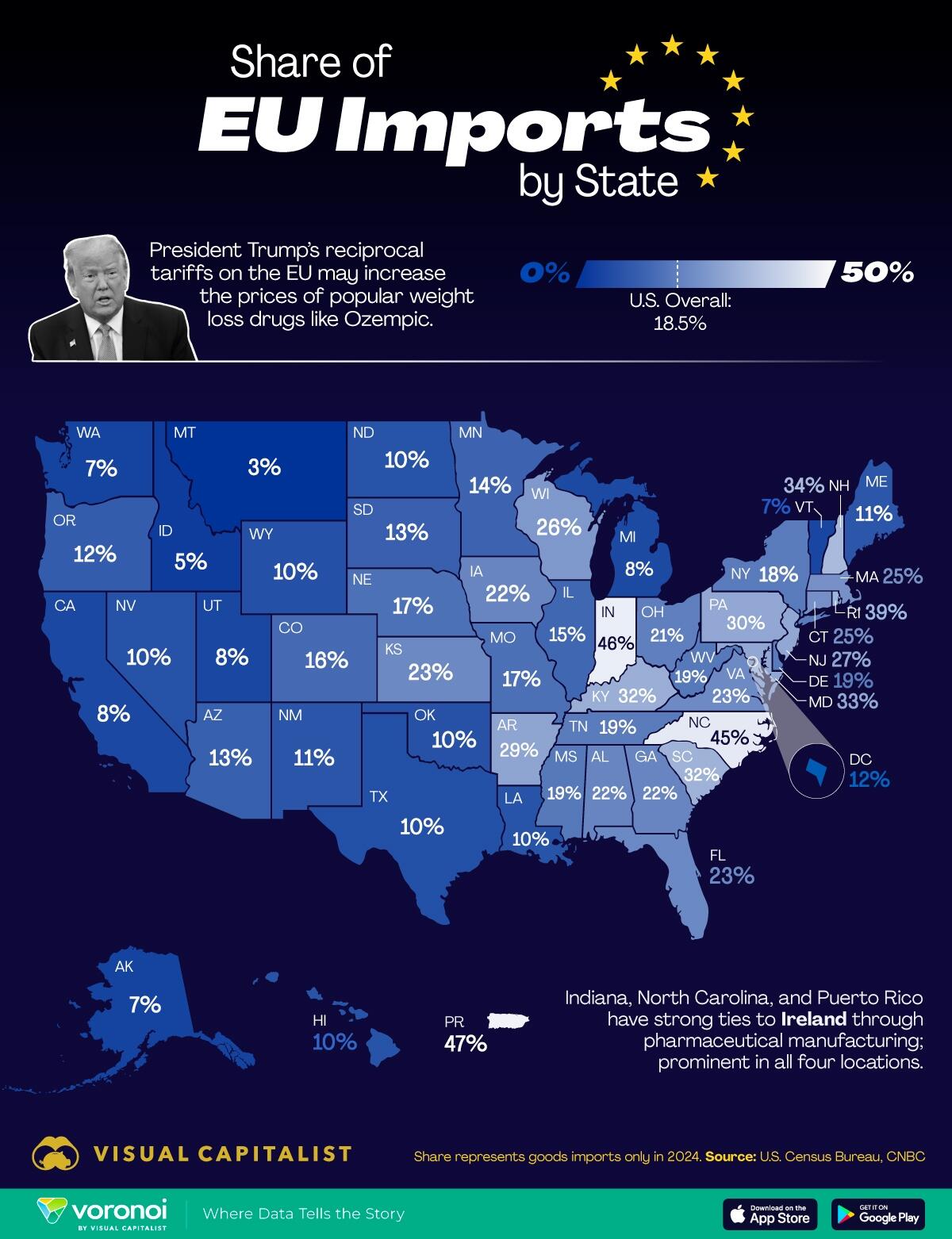See other National News Articles
Title: How Much Does Each US State Import From The EU
Source:
[None]
URL Source: https://www.zerohedge.com/geopoliti ... t-sovereign-wealth-funds-world
Published: Feb 19, 2025
Author: Tyler Durden
Post Date: 2025-02-19 07:33:30 by Horse
Keywords: None
Views: 46
As a bloc, the European Union is the largest source of American imports, valued at more than $600 billion in 2024. However, not all of that trade is spread evenly between America’s 50 states. This map, via Visual Capitalist's Pallavi Rao, shows the share of U.S. imports from the EU by each state. For example, Indiana, North Carolina, and Puerto Rico all sourced more than 40% of their 2024 imports from the EU. This is an impact of the pharmaceutical manufacturing industry which has a foothold in all three U.S. locations and Ireland. In fact, Ireland is Indiana and North Carolina’s top import partner, bucking the Canada–Mexico dichotomy. Reciprocal Tariffs and What They Mean for U.S.–EU Trade President Trump recently announced reciprocal tariffs, intending to match American duties with what trade partners have for American products. One of his biggest complaints has been the levies on American cars sold in the EU, which are more than what the U.S. charges on European cars in America. Motor vehicles are a top three EU export to America, following pharmaceuticals, and crude oil. Once these tariffs go into effect, duties will increase on European cars sold in the U.S., thereby increasing prices. However, the pharmaceutical sector could be hit the hardest. As CNBC reports, the U.S. imports necessities including: surgical and medical instruments, medical devices (like CRT machines), vaccines, hearing aids, and artificial joints. Poster Comment: Protecting Purchasing Power for Hundreds of Years Gold - $4,000 per ounce this year and $5,000 in 2026 (If Musk audits the gold in Fort Knox, that could pop the price of gold. Someone might have leased the gold and need to replace it.) https://www.zerohedge.com/the-market-ear/protecting-purchasing-power-hundreds- years 
Post Comment Private Reply Ignore Thread